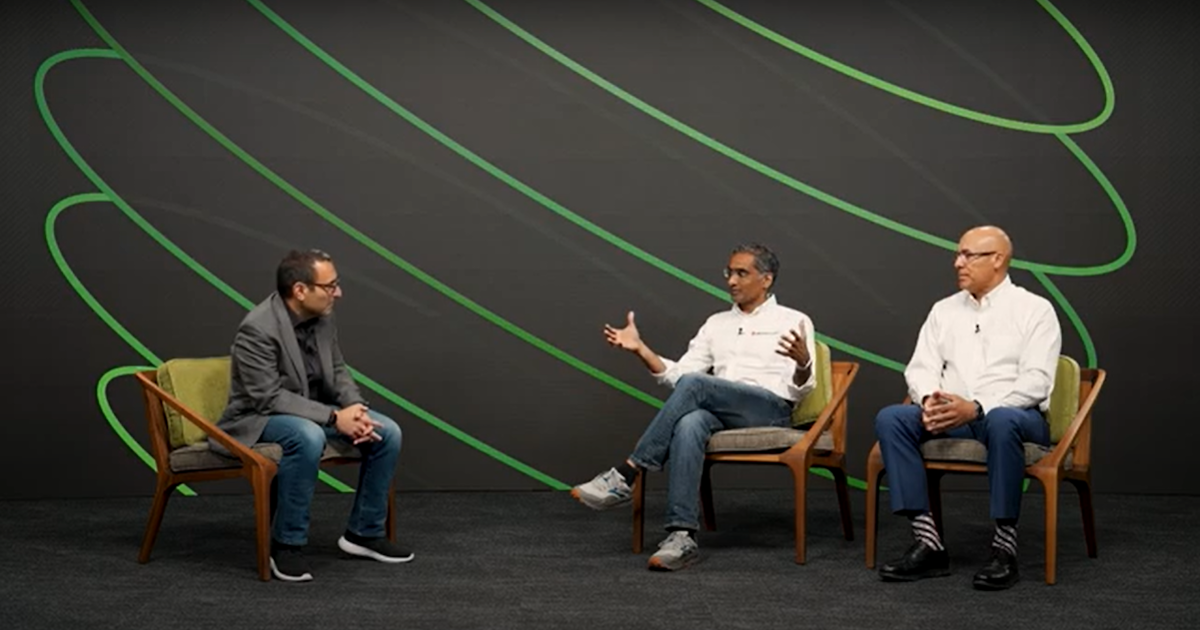 INFRA
INFRA
 INFRA
INFRA
 INFRA
INFRA
As technological innovations take center stage in the enterprise world, networking issues are springing up, making Ethernet an ideal choice for scenarios that demand secure, stable and high-speed connectivity.
Given that artificial intelligence continues to surface as a distributed computing issue, Ethernet is winning over InfiniBand, according to Ram Velaga (pictured, center), senior vice president and general manager at Broadcom Inc.
“What I mean by a distributed computing problem is you cannot take an AI workload and run it on one GPU, no matter how big your GPU is,” Velaga said. “I think two years ago if you talked to anybody, they said, ‘If you’re building a GPU cluster, AI machine learning, nothing other than InfiniBand would work.’ Today, when you look at it, seven out of the top eight largest clusters in the world are built based on Ethernet.”
Velaga and Ray Mota (right), principal analyst and chief executive officer for ACG Research, spoke with Mansour Karam (left), group vice president of products, data center, at Juniper Networks Inc., at the Seize the AI Moment event, during an exclusive broadcast on theCUBE, SiliconANGLE Media’s livestreaming studio. They discussed why Ethernet gets the upper hand compared to other networks, such as InfiniBand. (* Disclosure below.)
When it comes to a cost-effective solution for high-performance networking, Ethernet is a perfect answer. This is because it’s at least 50% cheaper compared to InfiniBand, according to Mota.
“We have a software platform that’s like a digital twin, but it does economic simulation modeling of whatever architecture versus any architecture,” he said. “What we did in this particular case was we modeled Ethernet against InfiniBand. Honestly, some of the findings from a CapEx perspective is about 55% because even the ports on InfiniBand itself are twice as expensive as an Ethernet port. The overall TCO came out to about 56% savings over a three year timeframe right now.”
To enhance Ethernet’s resilience and scalability, remote direct memory access improvements are continuously being made. This is meant to boost consistent connectivity by minimizing interference, Velaga pointed out.
“While Ethernet today does everything that InfiniBand does, UEC has come up with a bunch of improvements to RDMA that allow it to do multipathing,” he explained. “You have an efficient retransmit, which is if packet four got dropped, we will go back and only retransmit packet four rather than transmitting five, six and seven. It’s built under the assumption that your underlying fabric might actually fail rather than InfiniBand. You build resiliency knowing failures will happen.”
Here’s the complete video interview, part of SiliconANGLE’s and theCUBE Research’s coverage of the Seize the AI Moment event:
Here’s the complete event video playlist:
(* Disclosure: TheCUBE is a paid media partner for the Seize the AI Moment event. Neither Juniper Networks Inc., the sponsor of theCUBE’s event coverage, nor other sponsors have editorial control over content on theCUBE or SiliconANGLE.)
THANK YOU